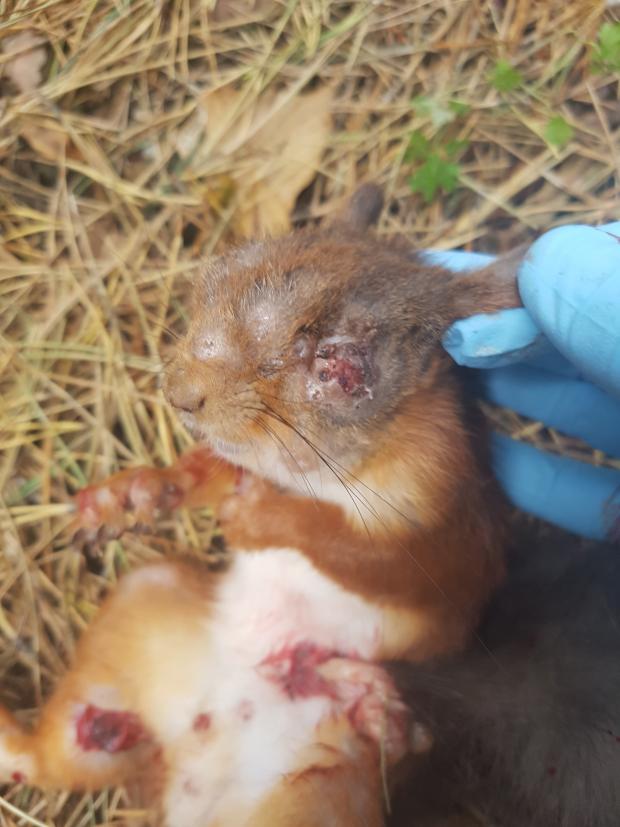Symptoms

Nearly all grey squirrels with pox antibodies do not display any outward symptoms. Pox-type viruses are fairly resilient and will survive outside the host for a considerable time if the conditions are favourable.
Dry weather may mean the virus remains viable for over a month. Wet conditions will reduce its viable period considerably.
Outside the host the virus can be killed by good hygiene procedures using anti-viral veterinary disinfectants. Once in a population of squirrels the virus spreads very quickly, isolated woodlands can quickly lose all their red squirrels.
The Northern Ireland Squirrel Forum has developed a Standard Operating Procedure (SOP) document that explains the best procedures for cleaning and disinfecting traps and squirrel feeders.
There is no known risk to humans from squirrel pox but washing your hands after handling any animal is advisable as other pathogens may potentially cause you harm.
Other diseases
Red squirrels seem particularly susceptible to a range of other diseases, this is probably due to the fact they are in relatively isolated populations, geographically separated from neighbouring populations, which in turn probably restricts the local genetic diversity.
There is certainly a risk that should an infection get into an isolated population that those squirrels can be severely reduced in number and there are not enough new squirrels from satellite populations to back fill the losses.
The spread of most of these diseases rely on close contact between animals, therefore where squirrels are attracted to artificial feeding sites there is an increased risk of pathogens coming into contact the visiting animals. Where feeders are used by squirrels frequent disinfection as detailed above can reduce disease spread.
Recent research in GB has indicated that squirrels can carry a strain of the bacterium Mycobacterium lepromatosis, the causal agent for Henson’s Disease or Leprosy in humans. At this stage it is unclear if the bacteria can be passed from squirrels to humans. The main route of transmission of leprosy between humans is respiratory droplets, through coughs and sneezes, although it may also spread by ingestion or enter the body through cuts and bites.
However it is worth noting that >95% of humans exposed to the leprosy agent do not react to it. Be alert for signs and symptoms of leprosy in humans. There can be a considerable lag between exposure to the bacterium and any physical symptoms which can extend to several years. Make yourself aware of the symptoms and report to your GP if you display them, be sure to inform your GP of your work with squirrels.
Symptoms mainly affect the skin, nerves, and mucous membranes (the soft, moist areas just inside the body's openings).
The disease can be successfully treated but can be misdiagnosed, as it is so rare in the UK/Ireland.
